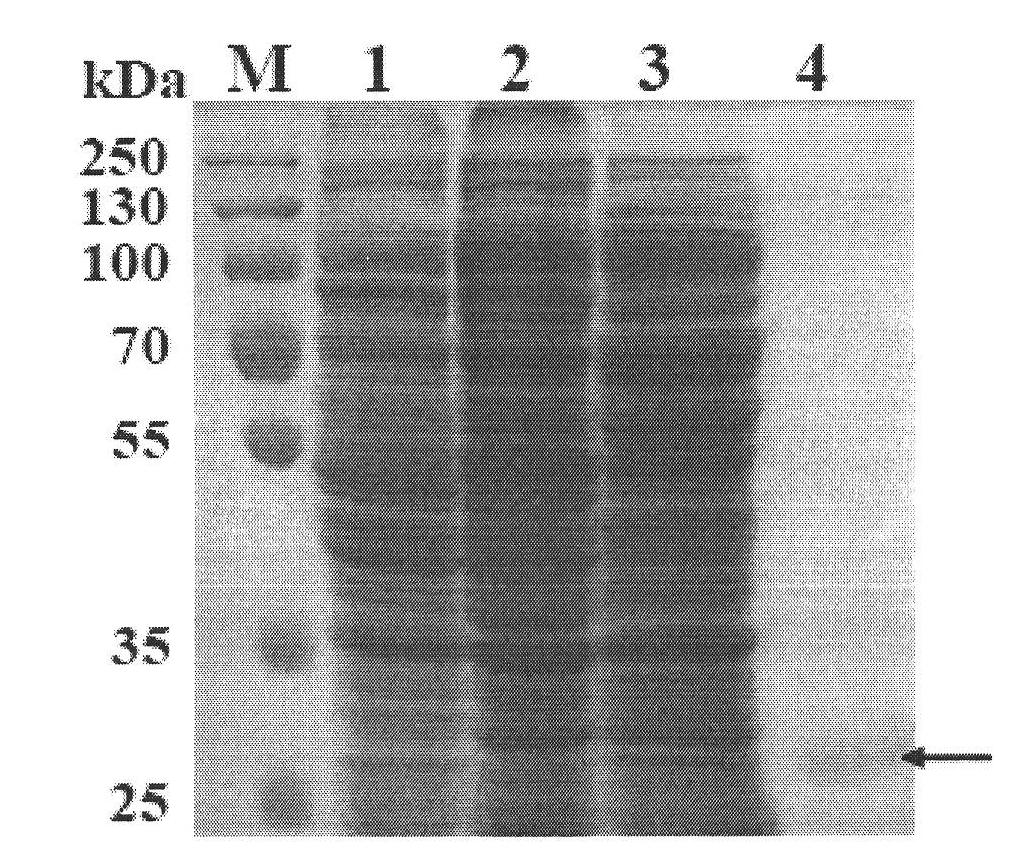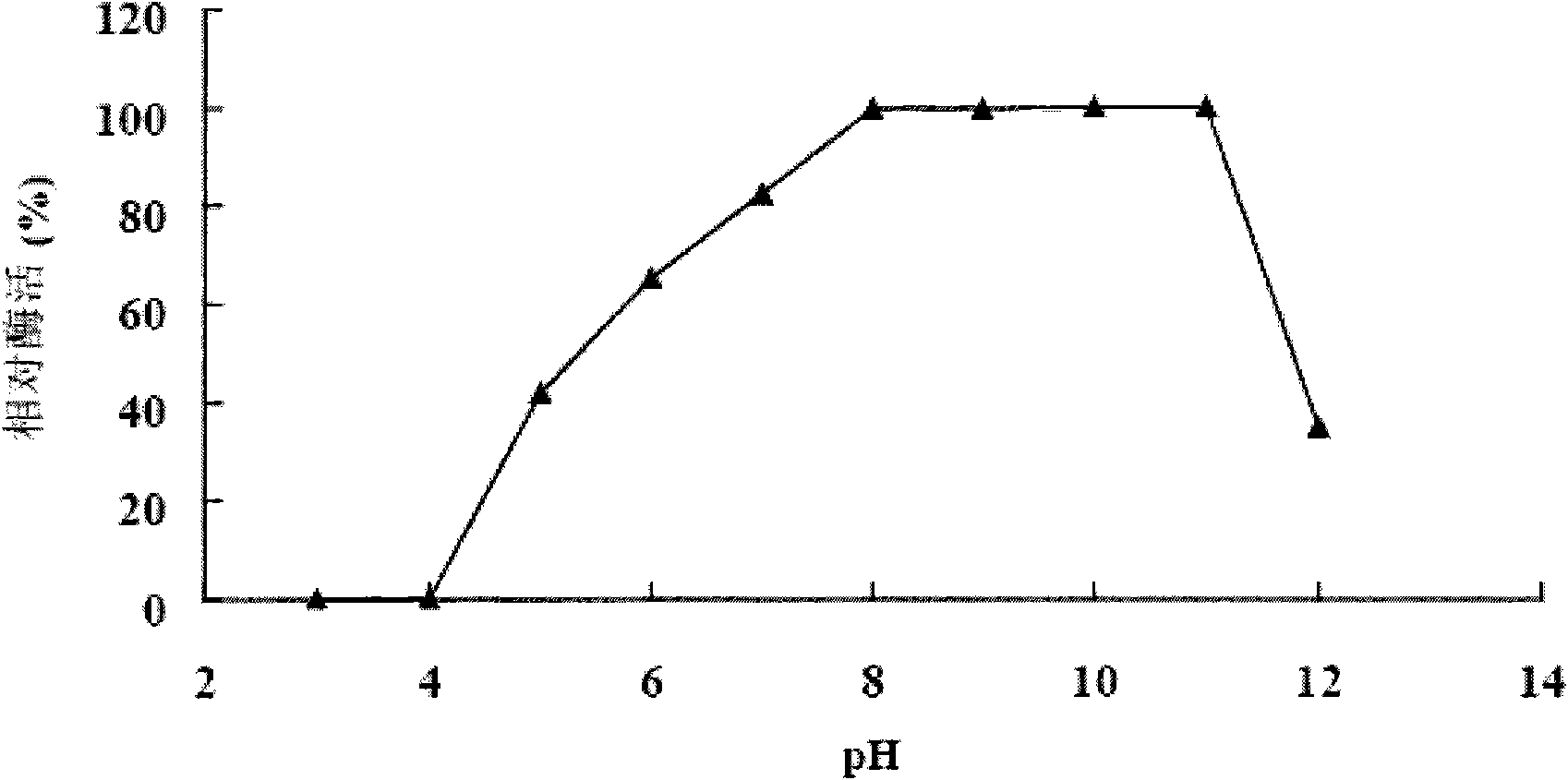Heat resistant N-acyl-homoserine lactonase AiiA-AI96 as well as coding gene and application thereof
A technology of acyl homoserine lactone and coding gene, which is applied in the field of heat-resistant N-acyl homoserine lactonase AiiA-AI96 and its coding gene and application, and can solve the problems of limited application range and poor heat resistance
- Summary
- Abstract
- Description
- Claims
- Application Information
AI Technical Summary
Problems solved by technology
Method used
Image
Examples
Embodiment 1
[0036] Embodiment 1, the isolation and identification of bacteria
[0037] 1. Isolation of bacteria
[0038] The strain was isolated from the bottom mud of fish ponds in Wuqing, Tianjin. After resuspending the bottom sludge with sterile water at 1:10 (soil:water), dilute to 10 with sterile water -5 Then spread on LB plates (with 5 μM C6-HSL and 3-oxo-C6-HSL), culture at 20°C for 5 days, pick the colonies into liquid LB and culture at 20°C for 3 days, centrifuge at 10,000rpm for 3min to collect the bacteria, and weigh Suspend in 1x PBS pH 8.0 buffer, ultrasonically break and centrifuge at 12000rpm for 10min, collect the supernatant to detect enzyme activity. A strain with enzyme activity was detected, and the strain was named AI96.
[0039] 2. Identification
[0040] Morphological identification: After culturing on a common LB plate at 20°C for 3 days, the grown colonies are large and flat, with spreading, hairy cluster-like, intertwined root-like colonies at the edges, and t...
Embodiment 2
[0044] Embodiment 2, the preparation of enzyme
[0046] Extraction of Bacillus sp. AI96 genomic DNA: Bacillus sp. AI96 was inoculated into LB medium, and cultured at 30° C. for 48 hours. Take 1ml of bacterial liquid, centrifuge at 10000rpm for 3min to collect bacterial cells. Genomic DNA was extracted using TIANamp Bacteria DNA Kit (Tiangen, Beijing, China), and stored at -20°C for future use.
[0047] Amplification primers: AI96-up (5'-CTGATATGAGAAGGTGGATA-3') and AI96-down (5'-AACAGCATTATGATTTCCC-3'). PCR amplification was performed using the total DNA of AI96 as a template. The PCR reaction parameters are: 95°C for 5min; 94°C for 30sec, 45°C for 30sec, 72°C for 1min, after 35 cycles; 72°C for 10min, agarose electrophoresis detection. The obtained fragment was connected to the pEASY-T3 vector for sequencing. As a result, the fragment contained the full-length gene of aiia-AI96, and the gene sequence was shown in SEQ ID NO:2. The gene is a 753bp ...
Embodiment 3
[0063] Embodiment 3, N-acyl homoserine lactonase activity analysis
[0064] The enzyme activity was determined by the agar plate diffusion method. Dissolve 3-oxo-C8-HSL in 1x PBS pH 8.0 buffer to a final concentration of 1 mg / L. Enzyme activity reaction system: Mix 20 μL enzyme solution, 179 μL 1x PBS pH 8.0 buffer solution and 1 μL 3-oxo-C8-HSL solution, shake well. After incubation at 30° C. for 30 min, 50 μL of 10% SDS solution was added to the reaction system to terminate the reaction. In the plate diffusion method detection, ATmm agar was cut into 4x60mm strips with a scalpel, and the detection bacteria KYC55 was spotted on the strips with a toothpick at an interval of 4mm, and 10uL of the reaction-terminated enzyme reaction solution was dropped onto one end of the strips. After culturing at 30°C for 24 hours, count the number of blue spots, calculate the distance, and calculate the consumption of 3-oxo-C8-HSL according to the standard curve formula. After adding enzym...
PUM
| Property | Measurement | Unit |
|---|---|---|
| Molecular weight | aaaaa | aaaaa |
Abstract
Description
Claims
Application Information
 Login to View More
Login to View More - R&D
- Intellectual Property
- Life Sciences
- Materials
- Tech Scout
- Unparalleled Data Quality
- Higher Quality Content
- 60% Fewer Hallucinations
Browse by: Latest US Patents, China's latest patents, Technical Efficacy Thesaurus, Application Domain, Technology Topic, Popular Technical Reports.
© 2025 PatSnap. All rights reserved.Legal|Privacy policy|Modern Slavery Act Transparency Statement|Sitemap|About US| Contact US: help@patsnap.com



